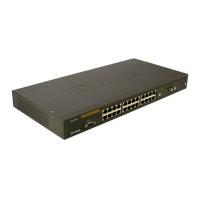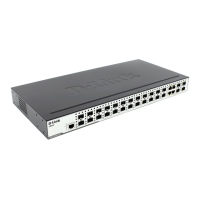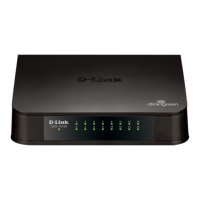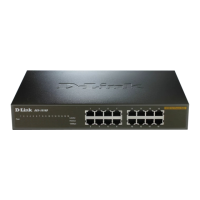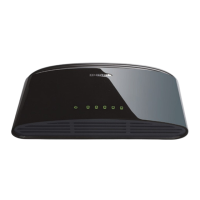DES-3000 Series Layer 2 Switch CLI Reference Manual
68
enable autoconfig
Purpose Used to activate the autoconfiguration function for the Switch. This will load a
previously saved configuration file for current use.
Syntax
enable autoconfig
Description When autoconfig is enabled on the Switch, the DHCP reply will contain a
configuration file and path name. It will then request the file from the TFTP
server specified in the reply. When autoconfig is enabled, the ipif settings will
automatically become DHCP client.
Parameters None.
Restrictions When autoconfig is enabled, the Switch becomes a DHCP client automatically
(same as: config ipif System dhcp). The DHCP server must have the TFTP
server IP address and configuration file name, and be configured to deliver
this information in the data field of the DHCP reply packet. The TFTP server
must be running and have the requested configuration file in its base directory
when the request is received from the Switch. Consult the DHCP server and
TFTP server software instructions for information on loading a configuration
file.
If the Switch is unable to complete the autoconfiguration process the
previously saved local configuration file present in Switch memory will be
loaded. Only Administrator-level users can issue this command.
When autoconfig is enabled and the Switch is rebooted, the normal login screen will appear for a few moments while the
autoconfig request (i.e. download configuration) is initiated. The console will then display the configuration parameters as they
are loaded from the configuration file specified in the DHCP or TFTP server. This is exactly the same as using a download
configuration command. After the entire Switch configuration is loaded, the Switch will automatically “logout” the server. The
configuration settings will be saved automatically and become the active configuration.
Upon booting up the autoconfig process is initiated, the console screen will appear similar to the example below. The
configuration settings will be loaded in normal order.
Example usage:
To enable autoconfiguration on the Switch:
DES-3026:4#upload configuration 10.48.74.121
c:\cfg\log.txt
Command: upload configuration 10.48.74.121
c:\cfg\log.txt
Connecting to server................... Done.
Upload configuration...................Done.
DES-3026:4#
NOTE: Dual-purpose (DHCP/TFTP) server utility software may require entry of the
configuration file name and path within the user interface. Alternatively, the DHCP
software may require creating a separate ext file with the configuration file name
and path in a specific directory on the server. Consult the documentation for the
DCHP server software if you are unsure.
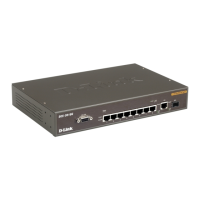
